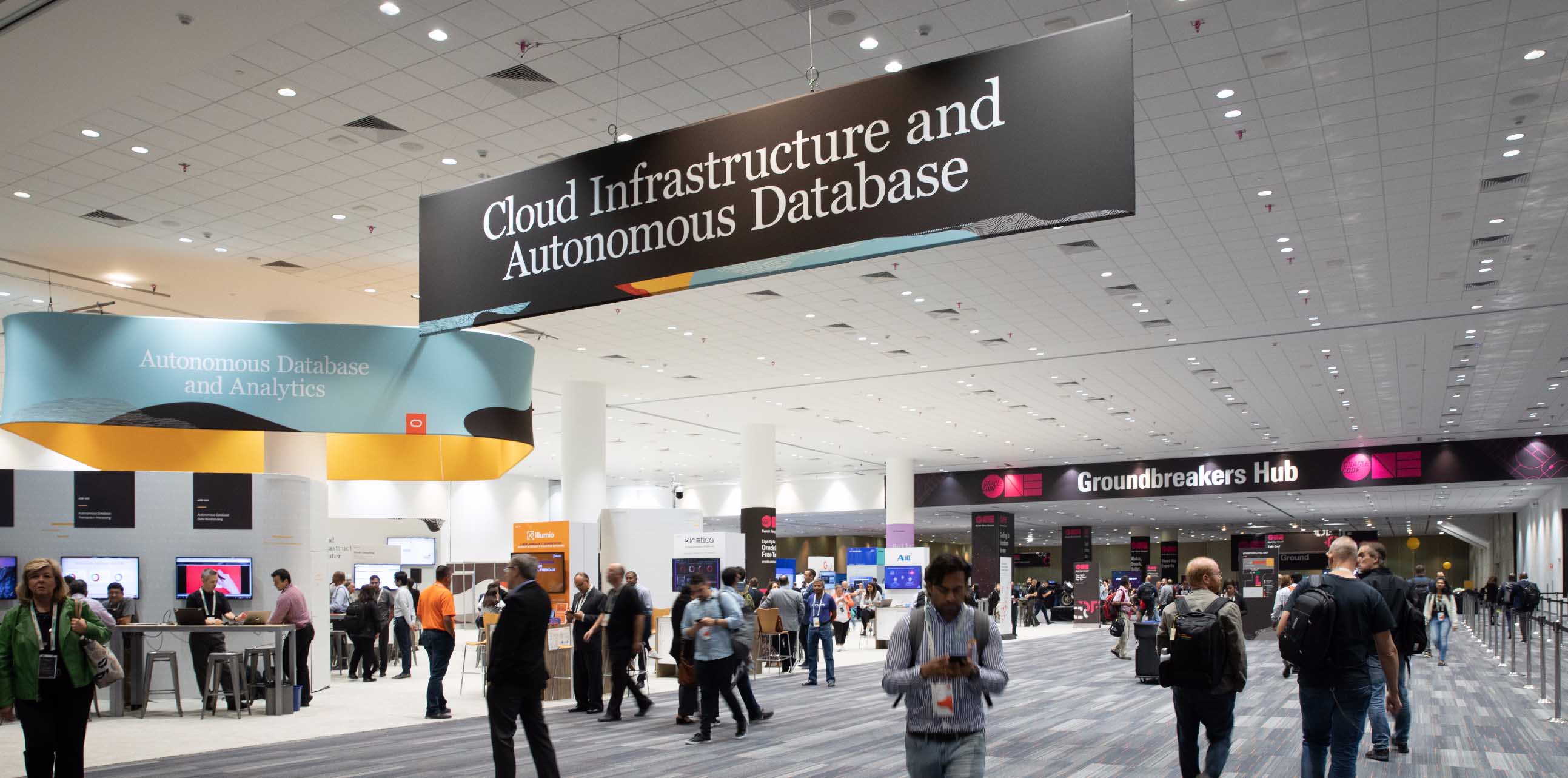Oracle Autonomous Database Adds ‘Self-Driving’ Features; Lets Non-Experts Use ML
This fall, Oracle continues to roll out features and preview updates for its ‘self-driving’ Oracle Autonomous Database. IDN reviews some notable ones with Oracle vice president Jenny Tsai-Smith.
by Vance McCarthy
Tags: autonomous, database, DBA, indexing, machine learning, self-driving, Oracle,

Vice President
Oracle Database Product Management

"Oracle’s goal is to provide an always-learning, a self-driving autonomous database."
This fall, Oracle continues to roll out features and preview updates for its ‘self-driving’ Oracle Autonomous Database. The technologies debuted at last month’s Oracle OpenWorld.
Enhancements to Oracle Autonomous Database include smart indexing, easier rollbacks, better performance and ways to make machine learning accessible to non-expert users.
Oracle Autonomous Database uses a machine learning to make data center operations self-driving, self-repairing, and self-securing, Jenny Tsai-Smith, VP of Oracle Database Product Management, told IDN.
She makes a sharp distinction between automation and autonomous.
“The word autonomous is different from automation. With automation, someone gives the instruction, and someone else or some machine does it blindly. Autonomous is the ability to learn and take action in an independent fashion,” she said.
“With the Oracle Autonomous Database, we’ve introduced the ability to learn from how the database is being used. We then gather all that information and then we make intelligent decisions on what to do to optimize the performance of the database," she added. “In the end, the goal is to take all that knowledge and provide an always-learning, a self-driving autonomous database."
The base for Oracle Autonomous Database’s ‘learnings’ is information from millions (if not billions) of database activities Oracle has supported for customers over the years, Tsai-Smith said. These include workflows, queries, tractions types and how many users access what types of data and when.
Algorithms within the database leverage all this information to make decisions about the best ways to automate critical database and infrastructure operations, such as patching, tuning and upgrading, she said. This focus is to help remove a lot of tedious and error-prone handwork done by DBAs and IT ops teams.
Tsai-Smith listed several of Oracle's goals for autonomous features, including:
lowering overhead
intelligently automating operations
shortening time-to-insights
reducing time to problem resolution - and
avoid problems altogether, where possible.
She also drew attention to several notable Oracle Autonomous Database updates:
Automatic Index Creation
"Much of DBAs time is spent trying to figure out what indexes to create to ensure faster queries. With Oracle Autonomous Database, we have created a way of essentially figuring out what indexes you need, based on the workload characteristics," she said.
“We start with a virtual index and then we create it (or materialize the index). Then we run it outside of the production workload. All that is done under the covers without the DBA doing anything.”
Oracle Autonomous Database then reviews those indexes to be sure they won't cause degradation of performance. "We also allow you to see a report that says, 'Here is the kind of improvement you will realize if you use these indexes.' We also show you the other indexes that you never use,” she said.
Avoid Rollbacks
Oracle Autonomous Database also lets DBAs avoid rollback issues. “Let’s say you updated 100 rows and change your mind. With Oracle Autonomous Database, in one command, you can rollback and undo," Tsai-Smith said.
This approach avoids a common issue with manual rollbacks, she added. "In manually-managed databases, DBAs have to make sure they have enough rollback segments so they won’t run out of them, especially for long-running transactions,” she said. “In Oracle Autonomous Database, DBAs can’t even create rollback segments. We turn it off. We disable quite a lot of things that don’t think DBA won’t need to do."

Automated Machine Learning (AutoML)
AutoML automatically builds and compares machine learning models at scale, plus lets non-experts work with machine learning.
“With data scientists, one of their biggest challenges is taking data and moving it from the source of the data to another place where they want to run their ML algorithm. The transfer of the data can take days, depending on how much data there is,” Tsai-Smith said.
Oracle Autonomous Database wants to make this simple by flipping this process around. "What we want to do is to bring the algorithm into the database."
Tsai-Smith also shared another driver behind AutoML - the non-ML expert. "There are quite a few people who are not experts with ML that want to be able to benefit from using algorithms. Auto ML lets that non-expert user take advantage via a simple, intelligent interface.
Under the covers, AutoML automatically builds and compares machine learning models at scale, plus facilitates the use of machine learning by non-experts. "AutoML will look at the data and recommend algorithms you could use. It will also train the algorithm to be able to predict the insights you can get. So, it's automation for the non-expert ML user,” she added.
We asked if AutoML could be compared to autosuggest-type features, such as in Google search?
“Yes, exactly,” Tsai-Smith said. “AutoML will look at the data you have and the questions you are giving it. So, based on the data you have and the question you are giving me, AutoML will present four algorithms you want to try.“
New Blockchain Table Type
Here, rows are cryptographically-chained to provide a secured ledge. Further, the ledger is easier to use than traditional blockchain tools. Another benefit is, with Oracle Autonomous Database, the blockchain tables can participate in transactions and queries with other tables, Tsai-Smith said.
Other Oracle Autonomous Database Updates, Previews
Oracle also revealed several other core updates that will be available through the end of the year and into 2020.
Perhaps most notable is the addition of a native persistent memory (PMEM) database.
PMEM lets companies accelerate data access across workloads that demand lower latency. Examples can include high-frequency trading or even mobile communication, Tsai-Smith said. The PMEM improvement comes hand-in-hand with a major Exadata hardware update, she added.
“We are cognizant of the need to take advantage of hardware to help accelerate performance. So, persistent memory adoption is very, very important and a big differentiator,” Tsai-Smith said. It is designed to work with Oracle’s first iteration of ExadataX8M (an update of Exadata X8 - with ‘M’ for memory.)
With the new hardware, “We’re expecting much better performance, and the database runs with mixed workloads analytics and transactional processes, she added.
That new hardware is based on technology from Intel and uses 100 gigabit remote direct memory access (RDMA) over converged Ethernet (RoCE) rather than InfiniBand. This results in 10x performance and latencies as low as 19 microseconds, according got Oracle specs.
There is also an added dedicated deployment option. The dedicated option offers more isolation in the cloud via a Dedicated Private instance. "It's just you. We actually use the word private database in a public cloud," she said. The serverless option remains available.
And coming in 2020, for enterprise customers reluctant to move data to the cloud, the company will release Oracle Autonomous Database Cloud at Customer. “That is going to be the best of both worlds. You get the capability of Oracle Autonomous Database in your datacenter. It is for people who, because of compliance, can’t let the data leave their premises,” she said. It can also help companies concerned about moving certain data to the cloud," she added.
Oracle is also adding an always-free tier option for global, philanthropic or educational users.
“This ‘free tier’ is something new. The free trial has a limited time and limited credits. The ‘new ’free tier’ gives you access to always free services, so it’s a free forever cloud option."
With the free tier, users can create up to 2 instances of Oracle Autonomous Database, along with up to 20GB of storage of each instance and 1 GB of RAM. Block storage and load balancing are also available.
"Through Oracle Cloud, [we're empowering] more people to test their ideas using advanced data and computing technologies, resulting in more solutions with broad impact," she said.
Related:
- SolarWinds Brings “Resilience’ to IT Ops for Agentic AI and Autonomous Operations
- Tray Enterprise-Class AI Platform Casts Light on “Shadow MCP” and Controls “AI Sprawl”
- Xano 2.0 Updates Production Grade Backend for AI, Apps To Solve "Vibe Coding Trap"
- Ai4 2025 Vegas Wrap-Up: What Enterprises Need to Know About Emerging AI Solutions
- Boomi Agentstudio Looks To Deliver Full-Featured Management Platform for AI Agents
All rights reserved © 2025 Enterprise Integration News, Inc.



